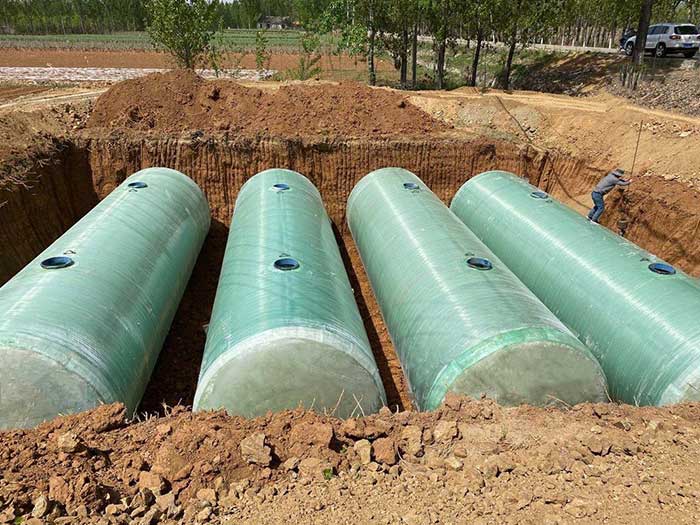Large fiberglass septic tanks are efficient devices for treating domestic sewage and feces. They are made of high-strength, acid- and alkali-resistant polymer materials such as synthetic resin and fiberglass, which are formed into high-strength mecha
Large fiberglass septic tanks are efficient devices for treating domestic sewage and feces. They are made of high-strength, acid- and alkali-resistant polymer materials such as synthetic resin and fiberglass, which are formed into high-strength mechanical shapes through a one-time molding process. They have good sealing performance, effectively preventing leakage and protecting surface water from pollution. Additionally, they do not corrode the surrounding plants, trees, wires, and cables. Furthermore, the design of fiberglass septic tanks considers anaerobic decay effects, with treatment efficiency exceeding traditional septic tanks by more than 2 times.

1. Economy: Fiberglass septic tanks are mass-produced in factories, mechanized, and standardized. They have a large effective volume and a small footprint, making them more affordable than traditional steel-concrete septic tanks, thus saving initial investment and long-term maintenance costs. Moreover, their corrosion resistance, impermeability, and easy cleaning reduce maintenance costs and extend service life.
2. Environmental Friendliness: Fiberglass septic tanks have good sealing performance, do not leak, do not pollute surface water, and are environmentally friendly. They also have excellent sewage treatment effects, efficiently purifying sewage and reducing environmental pollution.
3. High Efficiency: Fiberglass septic tanks have strong processing capacity, with anaerobic decay effects exceeding traditional septic tanks by more than 2 times. Their effluent quality can meet higher standards and remain stable.
4. Durability: Made of new materials fiberglass, they are resistant to aging and acid-base corrosion, with a service life of over 50 years. This allows for long-term benefits from a single investment, saving costs for subsequent maintenance and equipment replacement.
5. Convenient Installation: Integral molding, light weight, and compression resistance make installation quick and convenient. Compared to traditional concrete sewage tanks, energy consumption and emissions during transportation and installation are reduced.
6. Save Land Resources: Due to their small size and large effective volume, they save excavation area and improve land use efficiency.
7. No Post-Management Requirements: Fiberglass septic tanks are designed for buried, green, and energy-saving use, requiring no post-maintenance management.
1. Domestic Sewage Treatment: Fiberglass septic tanks are mainly used for treating domestic sewage in residential areas, schools, hospitals, and other places. They effectively remove suspended solids, organic matter, and pathogens from sewage, preventing pollution to the environment.
2. Urban Sewage Treatment: In urban sewage treatment systems, fiberglass septic tanks are used as primary treatment equipment to remove solid particles and suspended matter from sewage, reduce organic load, nitrogen, phosphorus, and other nutrients in water, thereby purifying water quality.
3. Special Area Applications: Fiberglass septic tanks are also suitable for the partial treatment of domestic sewage in industrial and civil buildings in areas with a seismic fortification intensity of 7 or below. There are corresponding application standards for collapsible loess areas, seismic fortification intensities above 7 in earthquake-prone areas, and other special areas.
Previous:None
If you want to customize fiberglass products or solve your company's storage, anti-corrosion and other industry problems, Shengte Technology is your first choice.
Tel: 86 13831860303
Email: 13831860303@126.com
Address: 598 Fuyang East Road, Jizhou District, Hengshui City, Hebei Province, China